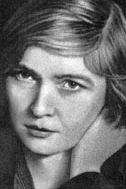Yesterday RIA Novosti pointed out something easily overlooked. On May 11, the head of the MOD’s Main Directorate of Combat Training (GUBP) announced in Krasnaya zvezda that the Russian Army will reintroduce the honorific “shock” [ударная] — as in 1st, 2nd, 3rd, 4th, and 5th Shock Army [ударная армия].

Medal for 3rd Shock Army Veterans
General-Lieutenant Ivan Buvaltsev indicated that units will compete for the right to bear the title “shock.” Defense Minister Sergey Shoygu will award the name to the most combat capable formations (divisions, brigades) — motorized rifle, tank, naval infantry, airborne, air-assault, but also units and sub-units. They will receive a distinctive heraldic emblem.
Commanders of Russia’s military districts and armed services and branches have nominated 78 formations, units, and sub-units. An MOD commission will inspect them this month before the final selection. It isn’t exactly clear how many will win the title.
Honorific names are traditional in the Russian military. The moniker Guards might be the most ubiquitous. It was a Tsarist title abolished by the Bolsheviks in 1918, but reinstituted by Stalin in 1941 to inspire divisions in the dark early days of the Great Patriotic War. Honorary names are passed down to preserve the lineage of different units. Common for divisions and brigades, they are less frequently awarded to regiments, battalions, etc.
Udarnaya [ударная] is the adjective from the verb udarit [ударить] meaning to hit, strike, bang, beat, shock, etc. So you’ll see the translation “strike army” sometimes.
Shock armies were big in the Soviet defeat of the Wehrmacht. They were much heavier in tanks and artillery than regular armies, and had tank and mechanized corps in them. They had organic air support. They served as reinforced armies on the main axes of fronts, and were built to break through enemy defenses. In short, there’s no army in today’s Russian military approaching the size — the men and equipment — of the wartime shock armies.
There were five Soviet shock armies by late 1942. Three belonged to the reserve of the Headquarters Supreme High Command [Ставка ВГК]. One was on the North-West Front, and another on the Volkhov Front. The latter — General-Lieutenant Andrey Vlasov’s 2nd Shock Army — was encircled and destroyed trying to lift the siege of Leningrad in the first half of 1942. Vlasov was captured, and he collaborated with the Nazis by heading the so-called Russian Liberation Army.
What the Russian MOD intends in resurrecting the shock army (shock division, shock regiment?!) only time will tell. But it’s probably not for nothing. The armies (divisions, battalions?!) so designated might be beefed up. Those chosen for the honor likely won’t surprise us. Look for them in the southwest opposite Ukraine and northwest opposite the Baltic countries.








